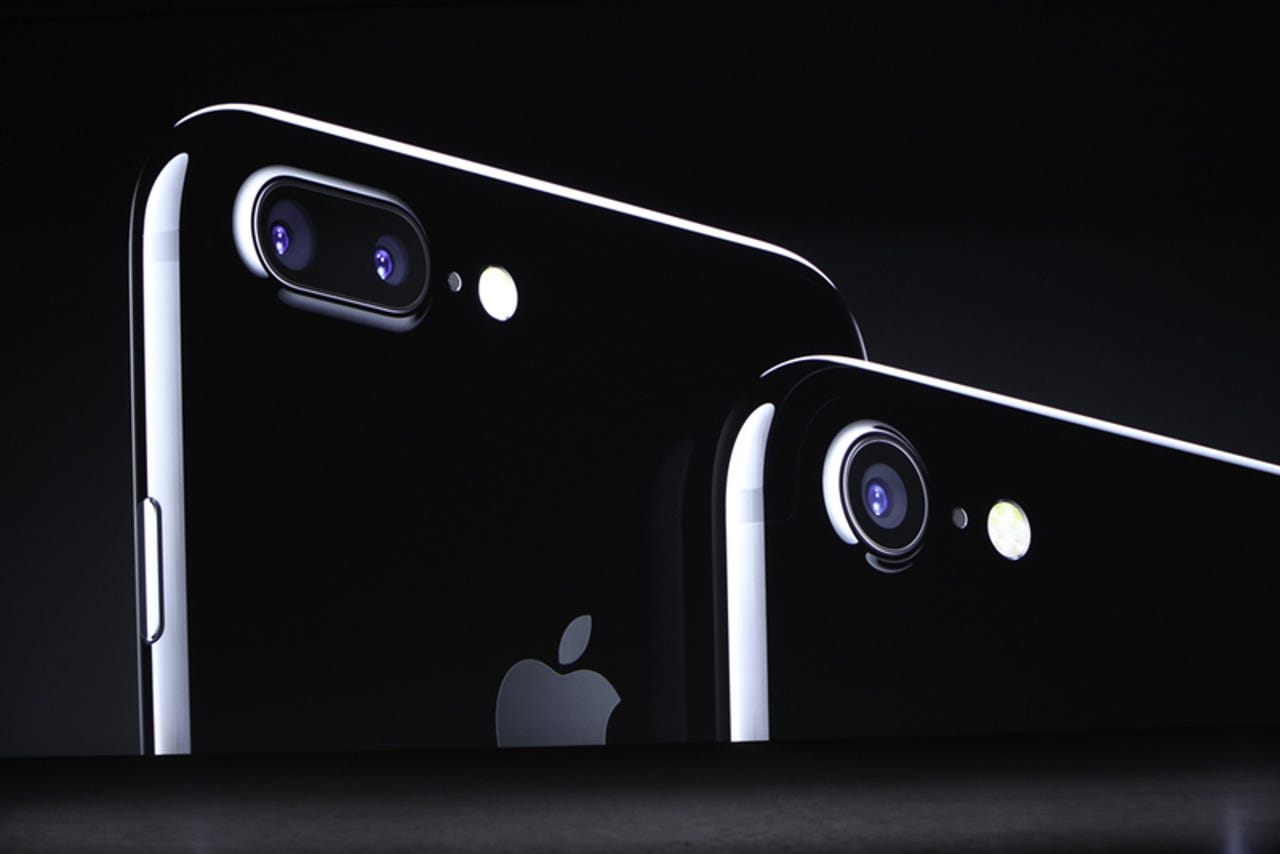iPhone 7 photography a game changer? Sorry, not sold

Apple introduced the latest flagship iPhone this week, the iPhone 7 and iPhone 7 Plus, with the usual amount of fanfare. Despite a focus on photography capabilities, however, it is unlikely that the device is advanced enough to sway professionals to switch their smartphones or upgrade their devices on the strength of the camera alone.
On Tuesday at Apple's product launch, the iPad and iPhone maker revealed the latest additions to the firm's smartphone line, the iPhone 7 and iPhone 7 Plus, have been equipped with completely new camera systems.
The devices have been fit with a dual 12-megapixel camera module which has improved image stabilization and a 28mm f/1.8 aperture lens. Apple has also improved on the design of the camera by creating a wide-angle color capture -- which, without any more real details, one can assume means that color information capture has been improved to enrich images.
If you go for the larger model, the iPhone 7 Plus, the camera also comes with an additional telephoto lens at 56mm f/2.8 -- which is not generally considered up to the focal length standards of what is deemed a "telephoto" lens -- for 2-times optical zoom and 10 times digital zoom through software.
iPhon
If you select the new "portrait" setting while taking a photo, the iPhone automatically switches to this lens, which is a fair angle and magnification length for portraiture.
It will also be interesting to see how the camera performs in low-light settings, which can be an issue even for those wielding decent DSLR setups if they do not have the right lighting capabilities. Apple has improved on the True Tone flash to increase the output of light by 50 percent and has also included a sensor which detects light flickers in order to compensate for poor lighting.
The real-time alterations to depth of field, the use of blurring to highlight certain parts of an image, such as a person or object, is a highlight of the camera's capabilities. Rather than fiddling with settings on a DSLR, the change in depth of field while shooting is created automatically through machine learning.
See also: Apple launches iPhone 7: A bridge device for a 10-year anniversary iPhone in 2017?
During the keynote, Apple quoted photographer Jason Nocito, who said:
"I loved the depth of field capabilities and the ability to shoot fast without losing sharpness. This iPhone proves you don't need a five-figure rig to be a great photographer. This camera is going to change the game."
The demo photos shown within the keynote were clever marketing and taken by professional photographers. The use of light and composition showed the camera capabilities of the iPhone 7 at its best -- and the use of physically beautiful people certainly didn't hurt the cause -- but therein lies the key.
The iPhone 7's camera is a creative tool, but considering the price -- starting at $769 -- if consumers are truly interested in photography, they could use those funds to set themselves up with a decent starter DSLR and perhaps a lens or two and a flashgun. It is unlikely that photographers will be swayed purely on these camera capabilities to upgrade their handsets or defect from rivals, such as LG or Samsung.
Furthermore, against rivals which are producing decent camera capabilities of their own, the iPhone 7's camera does not have any "game changing" features.
There is one interesting change, however. Standard images you produce from mobile devices are stored in the .JPEG format, which compresses colors and makes editing more difficult -- but does decrease the file size, allowing you to take more photos on average than if your storage was full of RAW images, which take up a lot of space as nothing is compressed.
The iPhone 7 camera set now also supports RAW files and .DNG formats, which are most often found in the domain of photographers. It remains to be seen just how useful this feature is going to be for the average user, and while some mobile device photographers may find it useful for editing purposes, I'm yet to be convinced.
To the company's full credit, however, Apple marketing chief Phil Schiller was careful to say that "we are not saying to throw out your DSLRs [..] what we are saying is this is the best camera we've ever made in a smartphone."
In short, an expensive smartphone does not make you a photographer. It's not to say you can't produce some rather beautiful images through smartphone photography. Indeed, the idea has spawned its own separate industry full of mobile photography accessories, lenses designed for smartphones and tablets, tripods and more.
However, as someone who has long endured the after-the-event complaints of potential customers that ignored quotes for professional shoots in favor of a "friend who can do it" with their latest shiny or compact stuck on auto, I know that it takes more than a decent camera -- whether on a smartphone or a high-spec DSLR -- to produce professional results.
Photography is about far more than select a filter, point, shoot, and let software do the rest. You need to understand how cameras work, what composition is, lighting, and have an eye for design. If individuals actually want to learn about how to take an excellent photo, then they need to do more than rely on a well-marketed, sleek smartphone with a few lenses thrown in, and their investment could be better spent on a starter rig and some classes.
It's useful for smartphones or tablets to have camera capabilities, but at some point, you have to wonder whether research and development time would be better spent on improving the functionality of a smartphone's original purpose -- as a communication device. Better battery life, anyone?
